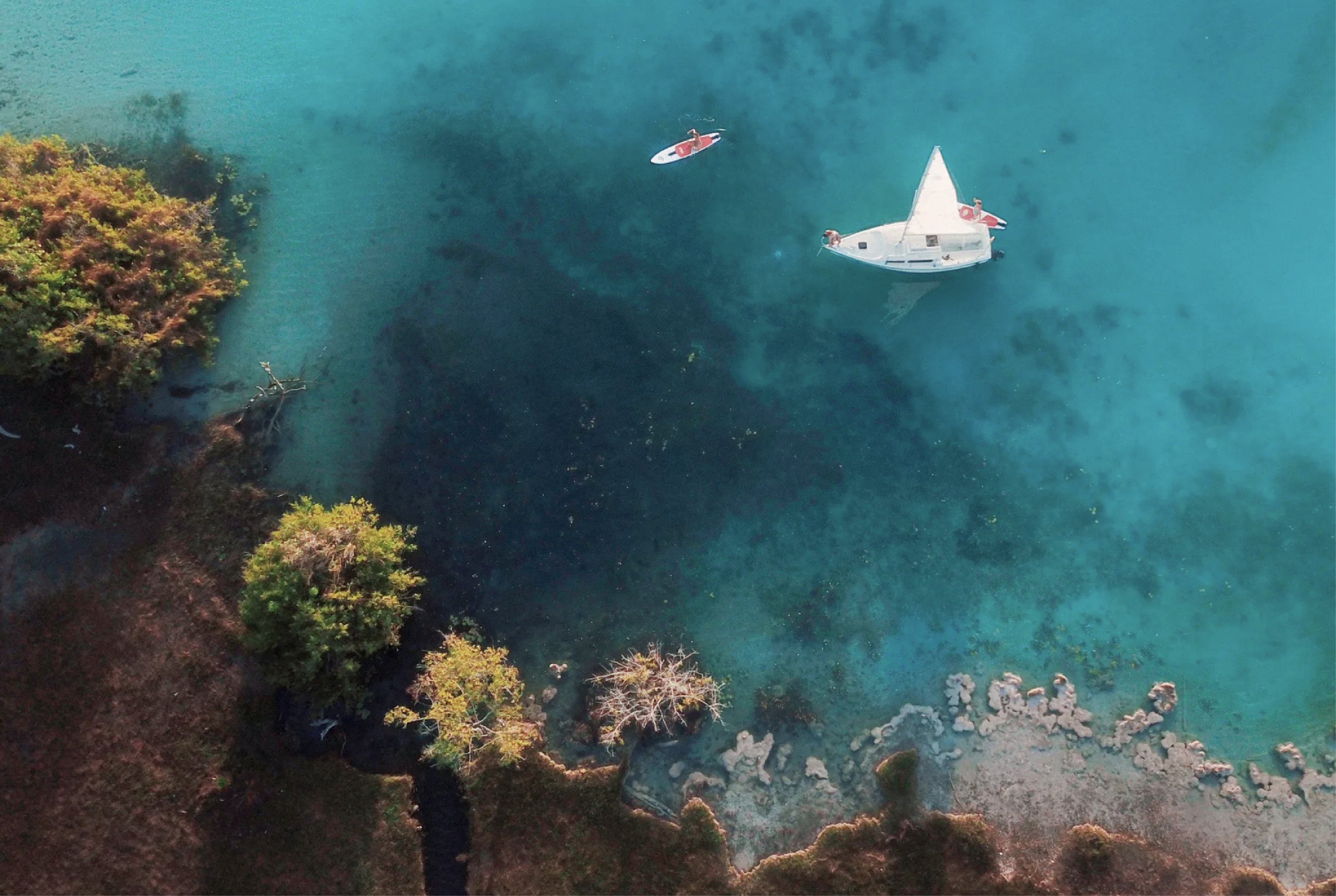
The next hot spot on Mexico’s east coast could set an example for sustainable tourism going forward.
All listings featured in this story are independently selected by our editors. However, when you book something through our retail links, we may earn an affiliate commission.
My first impression as I glide on a Hobie Cat is how much Bacalar, Mexico, looks like the Caribbean. This 31-mile lagoon near the border of Belize is known for its many shades of aquamarine. Travelers like me come expressly for these glowing waters, which have none of the crowds of Tulum and Cancún.
But more visitors (200,000 in 2019) are venturing into this region of tangled mangroves and dense jungle, and a clutch of considerate, design-focused hotels have opened to serve them—most recently, the sustainably minded Habitas, which opened 35 A-frame-style tented rooms last month. Yet those building Bacalar as a destination have seen the consequences of overtourism in Mexico, including in Tulum, about two hours to the north, and are determined to prevent the same from happening here. “There has been profound damage done to the ecosystem in the Tulum area, and it’s a vivid example of what to avoid and reverse if economic interests manage to take precedence over ecologic needs once again,” says Sofia Lynch, co-owner of the boutique hotel Casa Hormiga, another new arrival.

The hotel’s entrance Casa Hormiga Bacalar
Stromatolites, spongy microorganisms that are millions of years old, lurk below the lagoon’s shallow waters, giving them their color and stabilizing this ecosystem. But these fragile reeflike formations are easily destroyed and will take millennia to grow back. The area follows a low-impact development policy that limits the number of hotel rooms allowed per square foot, and prohibits large builds on the shoreline. Signs warn visitors not to touch the stromatolites, and boat usage is heavily restricted.
Even more pressing than capping the number of visitors, Lynch suggests, is ensuring that business owners properly inform their guests how to interact with the environment. She and her husband settled in Bacalar in 2009, when there were only a few businesses and foreigners in town, and opened a small café which expanded into a beach club before becoming Casa Hormiga last year. By working with tour operators, such as Bacalar Sailing, who share ecological best practices, as well as encouraging guests to be conscious about how they use air-conditioning and water, the couple hopes to create a more responsible environment. The same goes for Habitas. “Educating guests on the importance and fragility of the stromatolites is crucial for their preservation,” says cofounder and CEO Oliver Ripley. As part of its conservation strategy, the hotel has collaborated with local NGO Agua Clara to support lagoon monitoring, as well as Ejido Noh-Bec community and One Tree Planted to make a local reforestation program. At Macario Bacalar, a restaurant set in an open courtyard, chef Ricardo Méndez (formerly of Mexico City’s Pujol) serves zesty nopal tostadas. Méndez is working to launch a sustainable food festival to raise awareness and support the town.
On the Hobie Cat, we cruise along the blue, milky water for three hours, passing gnarled mangroves, sucking on lychee, marveling at the stromatolites, and stopping for a dip where we press our toes into the squelchy white limestone soil, with no other tourists in sight. It’s magnificent, but back at the shore, the water is temporarily brown from sediment swept in by recent floods. It’s a reminder of the lagoon’s fragility. But also that, we, as travelers, have the chance to protect it.
Source: This article appeared in the September/October 2021 issue of Condé Nast Traveler.
https://www.cntraveler.com/story/why-bacalar-mexico-has-the-draw-of-tulum-and-for-now-none-of-the-crowds
BY MARY HOLLAND | September 16, 2021
